Museum Display Information
The South African War 1899-1902
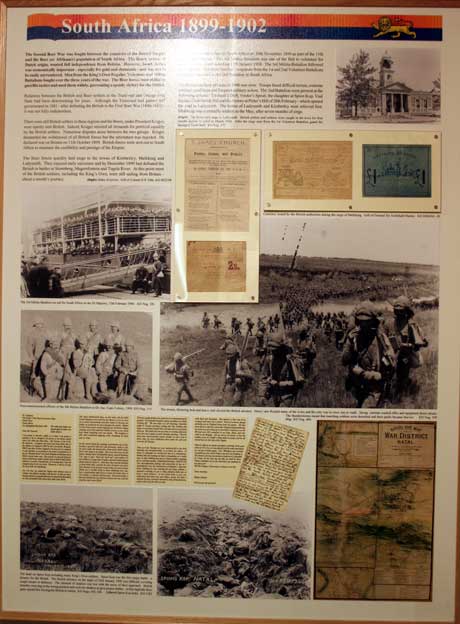
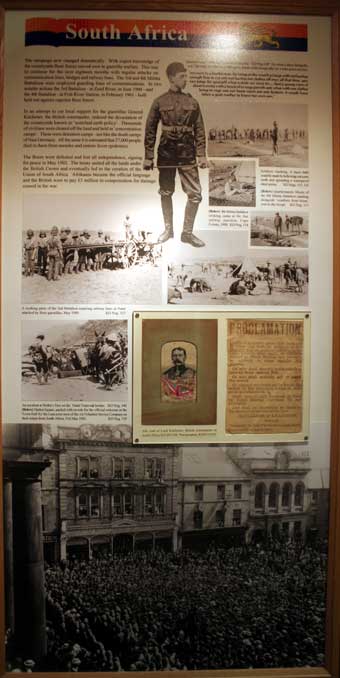
The Boer War was fought between the countries of the British Empire
and the Boer population of South Africa. The Boers hoped for
independence from Britain, but South Africa was economically important
to the British Empire. Men from the regular, volunteer and militia
battalions of the King’s Own fought in the actions over the three years
of the war. Although quickly defeated in traditional battle the Boer
forces prevented an outright victory through the use of guerrilla
tactics.
Relations between the British and Boer settlers, mainly of Dutch origin,
in Transvaal and the Orange Free State had been deteriorating for a
number of years. The Boers, under President Kruger, were anti-British.
Numerous disputes arose between the two groups of settlers.
In October 1899 Kruger proposed that disputes between the Boers and the
British should be resolved by arbitration. He demanded the withdrawal of
all British forces. The British rejected this ultimatum and war followed
to protect the prestige of Empire. Any attack on the Empire affected the
political and economic standing of Britain. In 1899 a British military
force was sent out to South Africa.
The Boer forces laid siege to the towns of Kimberley, Mafeking and
Ladysmith. In December 1899 the British were defeated in battles at
Stormberg, Magersfontein and Tugela River. The majority of the British
force, including the King's Own were still sailing from Britain.
The 2nd Battalion sailed for South Africa on 30th November 1899 as part
of the 11th (Lancashire) Brigade. The 4th (Militia) Battalion was one of
the first to volunteer for overseas service, and sailed on 11th January
1900. The 3rd (Militia) Battalion followed on the 12th February.
Volunteer Service Companies from the 1st and 2nd Volunteer Battalions
were later attached to the 2nd Battalion in South Africa.
The military advance in 1900 was slow. Troops faced difficult terrain,
extremes of weather and frequent military action with the Boers. The 2nd
Battalion were present at Trichard's Drift, Venter's Spruit, the
slaughter at Spion Kop, Vaal Krantz, Onderbrook Hill and the victory at
Pieter's Hill of 28th February - which opened the road to Ladysmith. The
towns of Ladysmith and Kimberley were relieved first. Mafeking was
eventually retaken in the May, after seven months of siege.
It was now that the campaign changed. The British had to face guerrilla
warfare for the next eighteen months. Lines of communication, bridges
and railway lines were regularly attacked. In an attempt to stop the
local support for the Boer guerrillas General Kitchener, the overall
British commander, established 'concentration camps' where thousands of
Boer civilians were held.
The 3rd and 4th Militia Battalions were employed guarding lines of
communications. In two notable actions the 3rd Battalion - at Zand
River, in June 1900 - and the 4th Battalion - at Fish River Station, in
February 1901 - both held out against superior Boer forces.
The peace was signed in May 1902. The treaty united all the lands under
the British Crown and eventually led to the creation of the Union of
South Africa. Afrikaans became the official language and the British
would pay £3 million in compensation for damage caused in the war.
Spion Kop letter of Corporal Walter Herbert.
No 2252 Corporal Walter Herbert
B Company
The King's Own Royal Lancaster Regt.
Field Forces
South Africa
The white flag
dodge was played again
so there is no doubt about it.
Nr. Springfield 29th Jan'y 1900
Dear Mr Peacock,
I am going to describe a fight, or at least I am going to attempt to do
so, though to do justice to the theme would take a far abler pen than
mine. (Mr Stevens of the D.M. for instance). I suppose you have read
long before this of the defence of Spueyn's Hill by the Lancashire
Brigade. Well I was there & how I happen to be here now is a mystery to
your humble, as according to the amm'n expended on us by our "Brother
Boers" the whole Brigade should have been killed several times over.
Just picture to yourself lying for sixteen solid hours under a perfect
hail of shell & rifle bullets without a second's intermission, & in
saying that I am not exagerating in the very least. However, I will try
& spin the yarn from the beginning.
On 17th Inst. we rushed the Tugela some distance west of Colenso (our
fellows leading) with the loss of only one man. Enemy retired as we
pushed forward, & entrenched themselves on some formidable hills about
three miles from River. The next couple of days were spent by us in
manoeuvring for position. On Saturday the game started, our fellows, as
usual, 'kicking off'. We were kept at it all Saturday, Saturday night &
Sunday morning, rushing this hill, holding that kopje, or escorting a
battery here and there till we were fairly done-up. We rested a bit (on
our arms) on Sunday afternoon and were into it again on early Monday
morning Then for some then unaccountable reason, though we were soon to
know why, we were withdrawn from under fire and took cover for all
Tuesday..
Then at 8 pm Tuesday we were marched-off in the dark (literally and
metaphorically) to we knew not where. At about 12 midnight we reached
the foot of a tremendous-looking hill, but looking not half so
tremendous as it really was, as after climbing one spur we found another
awaiting for us, and then another. Something this shape (SKETCH) (An
uncomfortable feeling took possession of me, as I remembered it was the
Anniversary of Majuba.) After five hours climbing we were nearing the
top when, without a moment's warning, we got a volley planked fairly
into us from a short distance. It was pitch dark, so you can understand
that there was near being a panic, but after a moment the boys recovered
themselves and, fixing bayonets, made a dash and the hill was ours.
You must understand that, at this time, all the hills round Spueyns were
held by the Boers, so we at once set to work entrenching ourselves
before it became too bright, as at present we were amongst the clouds.
Before we had done much trench-digging our 'brethren' began sniping, and
with explosive bullets to boot, as we could hear them snapping over our
heads. We laughed at that and continued digging, little dreaming of what
was to come.
As the clouds lifted the sniping, intermittent up to this, became a
general rifle-fire and presently, about 6 am, we were under the hottest
fire, from about 8000 rifles, that I ever hope to be under. But even
that was not the worst; shortly their Nordenfeldt started barking. T.A.
says it says: 'buck up! buck up!' and really it is not unlike it; except
that it makes one buck down pretty sharp when he hears it. And then they
started shelling us from both sides, and for the next 16 hours our noses
were buried in the ground except when we were firing. Shells are a
terrible thing to have whizzing over one, but a confounded sight worse
to have bursting close to one's head - as dozens did that day. One man
within a few feet behind me was blown in pieces by one, and the trenches
were soon filled with dead and wounded.
The mystery is how any of us escaped, and what was it all for? None of
us know, though probably you in England know from the papers. All they
have told us is that the Lancashire Brigade fought gallantly, but what
we were doing up on that hill is a mystery to us all. We had over 200
casualties in our Regt. alone, and over 1000 in the Brigade. All our
nerves are shook, so that the sudden crack of a Kaffir's whip makes us
jump, and we all retired back on this side of the Tugela.
Half our officers are dead, wounded or missing, & the same with our
N.C.O.s, so I am afraid it will be some time before we can get at them
again. Gen. Woodgate was severely wounded too, but I don't believe any
of us are funking it. Yet I know I, for one, am anxious to push on to
Ladysmith & I hope, by the time you get this, we shall be there. Please
remember me to all, and have you anybody in my place yet? Tell Mr Keegan
I did not get a chance to see Pat.
Yours sincerely,
Walter
Did you get my postcard?
Accession Number: KO1383
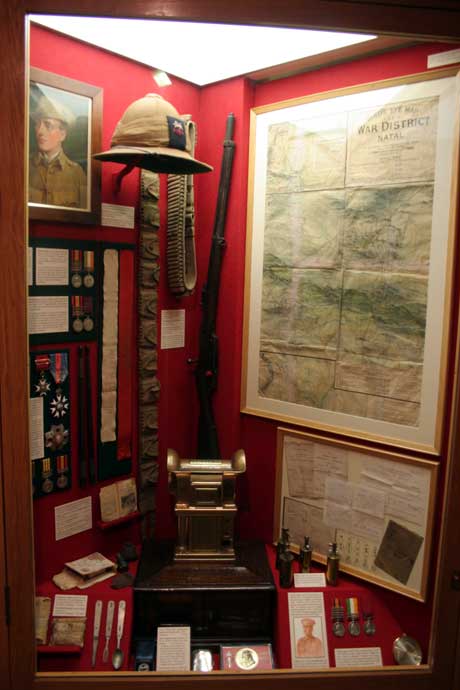
Objects:
Boer Mauser rifle captured by the Lancaster Volunteer Company of the
King’s Own Royal Lancaster Regiment during the war.
Accession Number: KO0029/02
Letter box made from breech block of Boer ‘pom-pom’ gun retrieved by
Captain Graham of the 2nd Battalion who was later awarded the DSO whilst
on special service in the South African War.
Accession Number: KO1121/43
New Testament printed for soldiers in South Africa in 1900. This was
carried by Sergeant F W Haydock.
Accession Number: KO1085
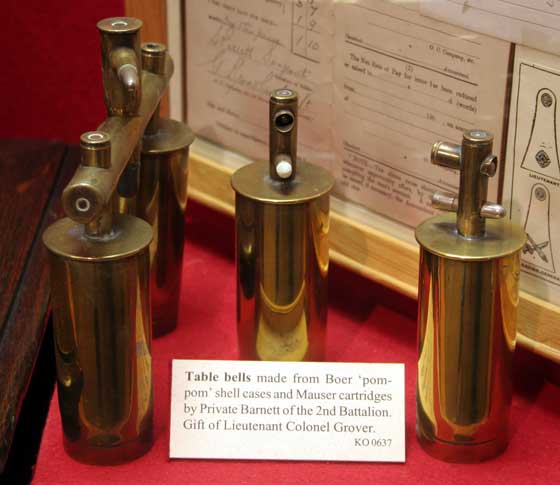
Table bells made by Private Barnett of the 2nd Battalion during the
South African War, from Boer ‘pom-pom’ shell cases and Mauser
cartridges.
Accession Number: KO0637/01-02-03
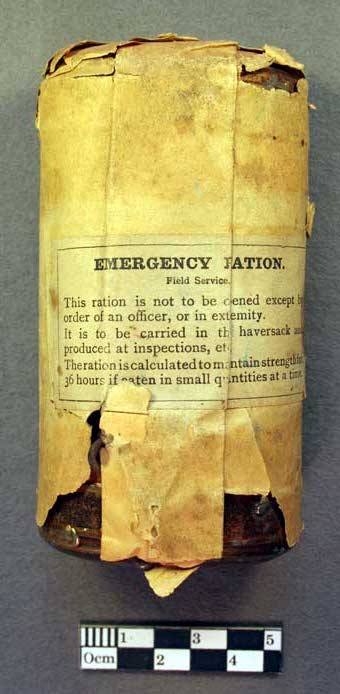
Emergency rations - carried by Private A Wilkinson of the 2nd Battalion
in the Boer War 1899-1902.
Accession Number: KO0449/01
Nose of Boer pom-pom shell.
Accession Number: KO0449/03
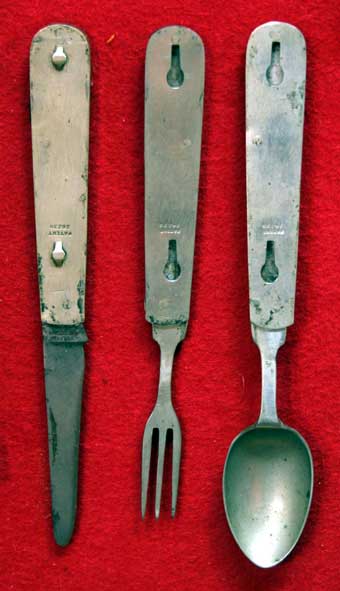
Fork, Knife and Spoon from combined set used in the Boer War, by Private
Wilkinson.
Accession Number: KO0449/04 05 & 06

Drum sticks found on a Boer War battlefield
by a member of the 1st Volunteer Battalion, 1900.
Accession Number: KO0363/01
Fragments of nine pound Boer shell found at Ladysmith.
Accession Number: KO 0507/07
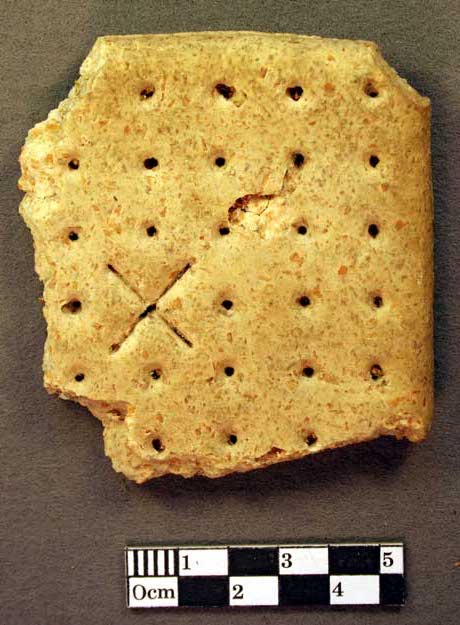
Hard tack biscuit sent home to England by
Private S. Cooper.
Accession Number: KO1054/01

Queen Victoria Chocolate Box sent out to troops to mark New Year, 1900.
This was
received by Sergeant Pollitt.
Accession Number: KO 1452/04
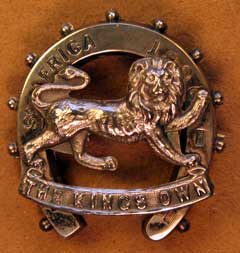
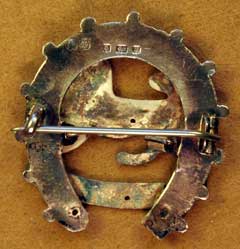
Silver Regimental sweetheart brooch, from South Africa 1900.
Accession Number: KO1942
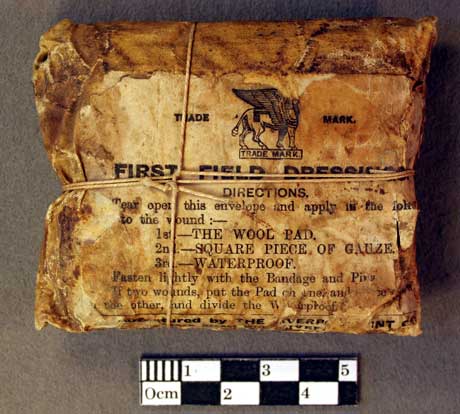
First Field Dressing, South African War.
Accession Number: KO 0449/02
Boer bandolier picked up donor, when a Sergeant in the 2nd Volunteer
Battalion in the Transvaal, 1901
Accession Number: KO 0387/01
Web bandolier worn by infantry South African War.
Accession Number: KO0509
Medal Group and paperwork of Sgt. A. W. Towndrow. His medals include the
Queen's South Africa Medal, 1914-5 Star, British War Medal and Allied
Victory Medal. Towndrow served in the Boer War with the Royal Dragoons
and in the First World War with the 8th Battalion of the King’s Own.
His profession on his Unit Register Card shows ‘evangelist’.
Accession Number: KO2108/07
‘Bird’s Eye Map of War District, Natal’ South African War 1899-1902.
Accession Number: KO 0700/01 KO Neg. 480
Topee worn during the South African War.
Accession Number: KO0927/08
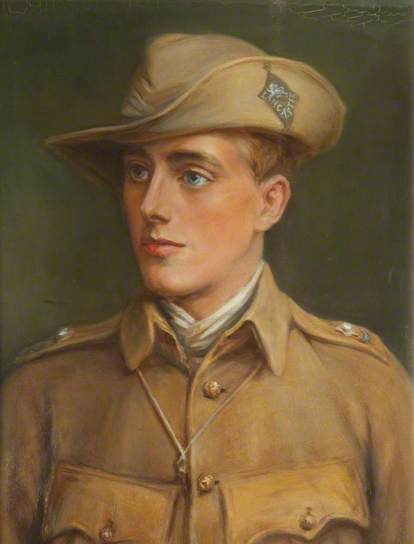
2nd Lieutenant James Eric Mackay, 4th Militia Battalion, King’s
Own. Portrait in oils.
Mackay joined the 4th Militia Battalion of the King’s Own in September
1897 and was embodied for service in the South African (Boer) War on
13th December 1899.
He received a regular commission in the King’s Own on 21st April 1900 and
served with the Mounted Infantry. Mounted Infantry were foot
soldiers who were trained on and provided with horses to increase the
area they could cover to combat widespread Boer ‘guerilla’ actions. He was killed in an ambush on 26th
September 1901, at the age of 23.
Accession Number: KO1378/01
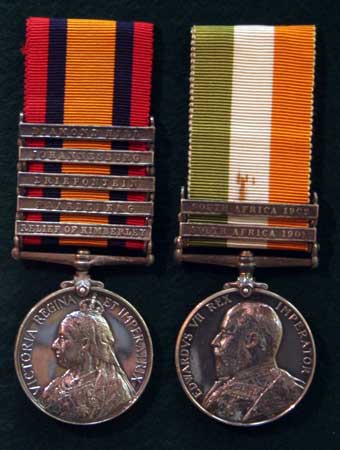
Medal group to Private Chidle comprising Queen’s South Africa Medal with
bars ‘Relief of Kimberley’, ‘Paardeberg’, ‘Driefontein’, ‘Johannesburg’
and ‘Diamond Hill’ and King’s South Africa Medal. Private Chidle served
in South Africa attached to a Mounted Infantry unit, and not with the
King’s Own. His service took him to many areas where the King’s Own were
not present, and thus his combination of bars is unique for the
Regiment.
Accession Number: KO 2183/34-35
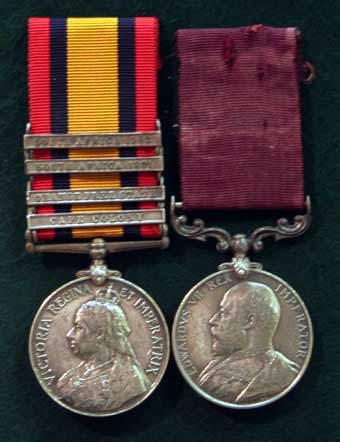
Medal group to Colour Sergeant John
Carmichael Bland comprising Queen’s South Africa Medal with bars
‘Cape Colony’, ‘Orange Free State’, ‘South Africa 1901’ and ‘South
Africa 1902’, and Long Service Good Conduct Medal.
Colour Sergeant Bland, the son of a veterinary surgeon from Newbury,
Berkshire, enlisted in the King’s Own at the age of 14 years in the
1880s. He saw overseas service in China, Malta and South Africa, and
spent fourteen years in Lancaster as Drill Sergeant. After retiring from
the Regiment he became ‘Curator and Guide’ at Lancaster Castle.
KO1817/01 & 02

Medal group to Stanley Pollitt comprising Queen’s South Africa Medal
with bars ‘Tugela Heights’, ‘Orange Free State’, ‘Relief of Ladysmith’,
‘Transvaal’ and ‘Laing’s Nek’, King’s South Africa Medal, and Long
Service Good Conduct Medal to Number 4844 Private Stanley Pollitt the
LSGC is named to Sergeant S Pollitt.
Stanley Pollitt was born in Manchester (on 26th June 1877) and enlisted
at the age of eighteen in the King’s Own on 26th July 1895. He served in
South Africa between 2nd December 1899 and 9th April 1903. He continued
service in England until his discharged, at the rank of Company Sergeant
Major, in 1916, after ‘serving 20 years and 345 days.’
Accession Number: KO1452/01-02-03

Relief of Ladysmith hatband.
Accession Number: KO0733/01

Relief of Ladysmith hatband.
Accession Number: KO1671/01
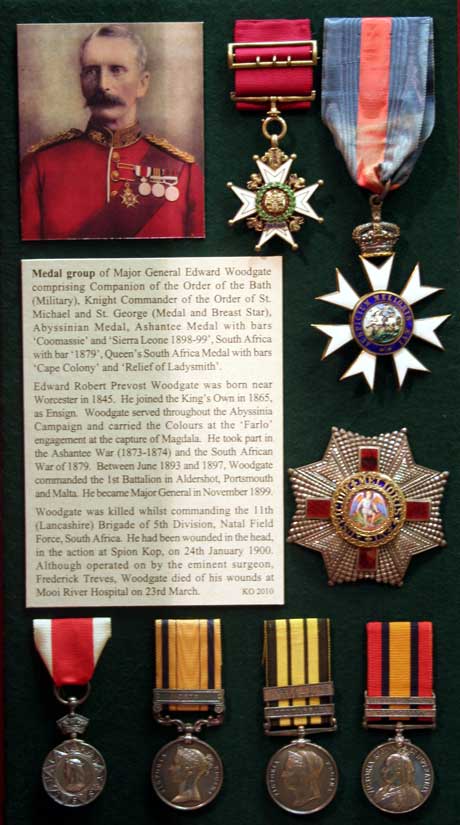
Medal Group of Major General Edward Woodgate comprising: Companion of
the Order of the Bath (Military), Knight Commander of the Order of St.
Michael and St. George (Medal and Breast Star), Abyssinian Medal,
Ashantee Medal with bars ‘Coomassie’ and ‘Sierra Leone 1898-99’, South
Africa with bar ‘1879’, Queen’s South Africa Medal with bars ‘Cape
Colony’ and ‘Relief of Ladysmith’.
Edward Robert Prevost Woodgate was born near Worcester in 1845 and
joined the King’s Own in 1865 as Ensign. He served through out the
Abyssinia Campaign and carried the Colours at the ‘Farlo’ engagement at
the capture of Magdala. Woodgate later took part in the Ashantee War
(1873-1874) and the South African War of 1879. He commanded the 1st
Battalion in Aldershot, Portsmouth and Malta between June 1893 and 1897.
He became Major General in November 1899.
Woodgate was killed whilst commanding the 11th (Lancashire) Brigade of
5th Division, Natal Field Force, South Africa. He was mortally wounded
in the head in the action at Spion Kop on 24th January 1900, and
although operated on by eminent surgeon Frederick Treves he died of his
wounds at Mooi River Hospital on 23rd March.
Accession Number: KO2010
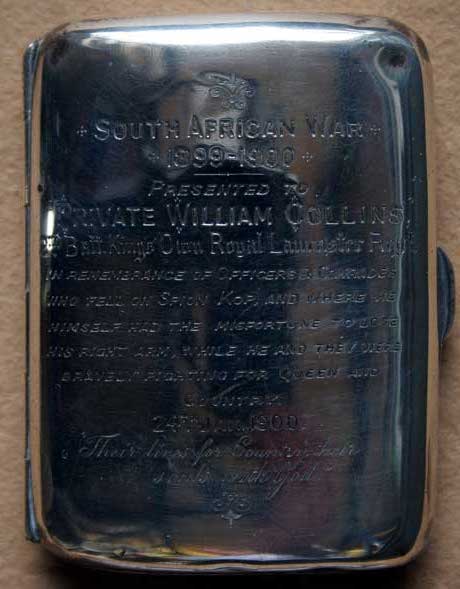
Silver Cigarette Box presented to Private
William Collins.
“South African War
1899-1900
Presented to
Private William Collins
2nd Battalion King’s Own Royal Lancaster Regiment
In remembrance of Officers and comrades who fell on Spion Kop and where
he himself had the misfortune to lose his right arm, while he and they
were bravely fighting for Queen and Country.
24th January 1900
“Their lives for Country their souls with God””
Collins became Mayor of Newport, Isle of Wight in 1931. He died on 15th
May 1961.
Accession Number: KO2145/01
© Images are copyright, Trustees of the King's Own Royal Regiment Museum.
You must seek permission prior to
publication of any of our images.
Only a proportion of our collections
are on display at anyone time. Certain items are on loan for display
in other institutions. An appointment is required to consult any of
our collections which are held in store.





















